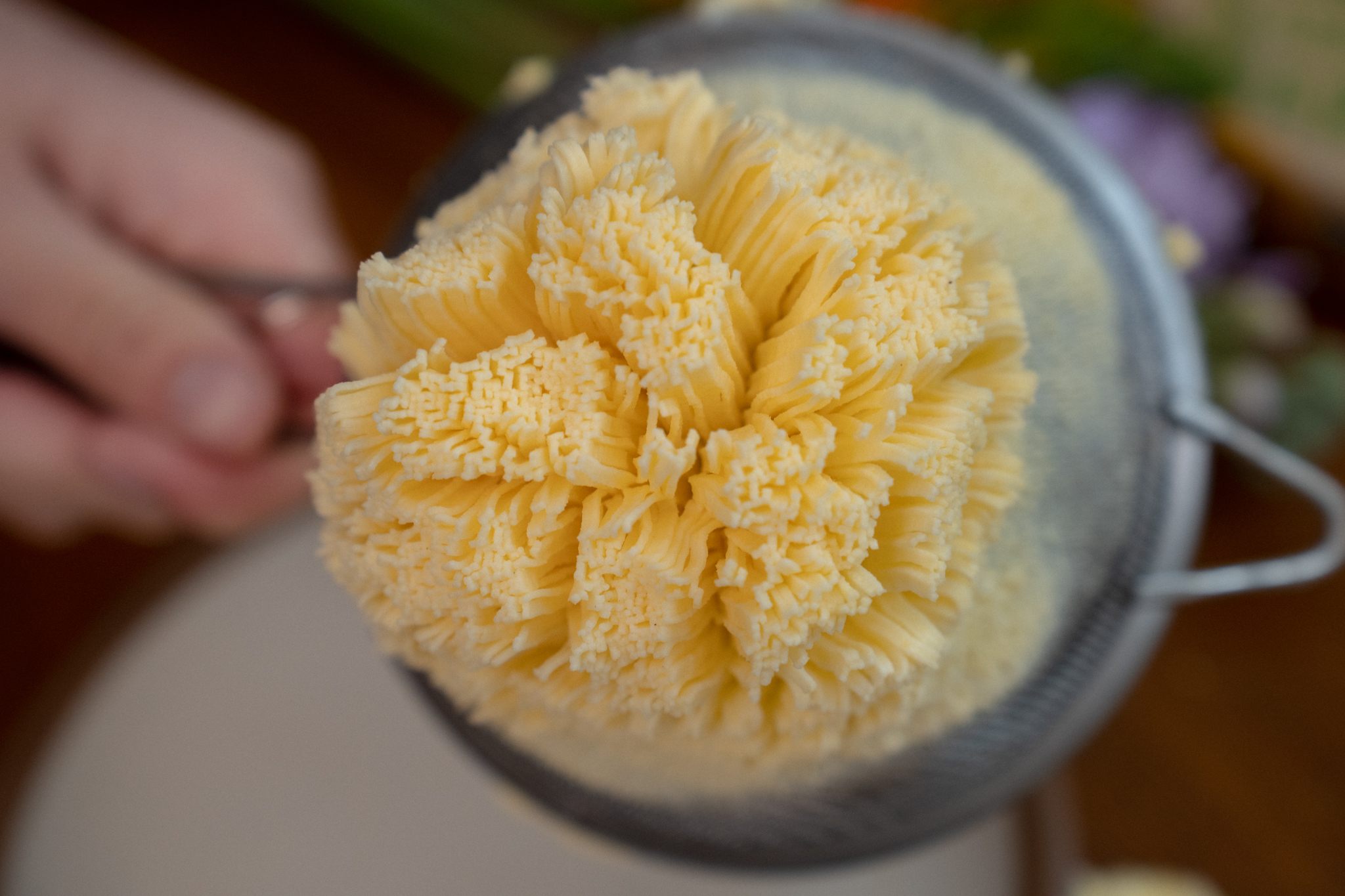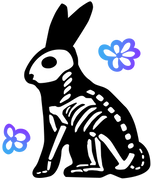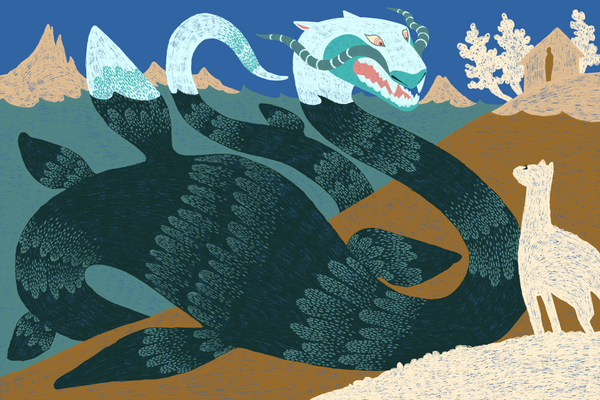How to Make Mystical ‘Fairy Butter’
This historical sweet spread has supernatural ties.
Long before the butter boards and butter candles of today, tantalizing butter desserts that resembled delicate golden threads were a favorite in Colonial America. Known as “fairy butter,” this pale yellow confection accompanied sweet breads such as scones, gingerbread, and towering cakes that cookbooks fancifully described as havens for gossamer-winged fairies.
Fairy butter required only four ingredients: egg yolks, orange- or rose-water, sugar, and freshly churned butter, meaning that cooks could whip up this impressive treat in a pinch. Many Americans found such recipes in English cookbooks, including those by Richard Briggs and Charles King published in the mid-18th century. It was also a favorite recipe of Dolley Madison, First Lady of the United States from 1809 to 1817, who paired it with gingerbread and served it to guests during White House teas.
One popular recipe appeared in The Art of Cookery Made Plain and Easy, published by Englishwoman Hannah Glasse in 1747. Glasse instructs the cook to mix the yolks of hard-boiled eggs with flower water and push the butter through a strainer to achieve tiny, airy strings.
Cookbooks of the era often featured elaborate spreads and aesthetically beautiful recipes with a French influence. According to Frank Clark, Master of Historical Foodways at Colonial Williamsburg in Virginia, printed cookbooks were prized luxuries, so very few wealthy individuals had this fairy butter recipe on hand. “You don’t need a cookbook to make stew and bread,” Clark says. “But when you want to make your table look like the King’s table or somebody in France’s table, then you need recipes.”

Fairy butter is more than just a fanciful name. It may have been inspired by the colorful jelly fungi long held to be the condiment of choice for magical creatures, giving rise to the names “fairy butter,” “witch’s butter,” and even “troll’s butter.” One type of jelly fungus, given the scientific name Tremella auranta by German-American mycologist Lewis David de Schweinitzbright, has a bright orange hue and a shape not unlike that of a small brain. Jelly fungi spore on everything from dead tree branches in forests to damp mine walls, both known stomping grounds of many magical creatures.
Fairy butter grows across the world, but much of its lore comes from Europe. One foraging book, The Fungal Pharmacy: The Complete Guide to Medicinal Mushrooms and Lichens of North America by Robert Rogers, dives into fairy butter’s association with fire and trolls in Sweden. Midsummer’s Eve, celebrated since the 6th century, once involved throwing the fungus into fires composed of nine different kinds of wood in order to thwart evil spirits. When farmers found fairy butter near their farm animals, they burned it to keep trolls away from their stock.
The recipe’s ingredients have associations with the magical world too, especially butter, which was an agricultural staple steeped in folklore. Hundreds of years ago, butter-churning was a coveted and complicated job. Unlike butter production today, European farmers churned out butter only for three months of the year and preserved the rest in crocks with layers of salt.

To stop fairies from meddling with the production and spoiling the butter, butter-churners invoked the power of holy water and wore wreaths made from rowan trees. In Irish folklorist’s Lady Gregory’s 1920 book, Visions and Beliefs in the West of Ireland, she recorded the belief that butter-churners should always “sprinkle a few drops of holy water about the churn, and [put] a coal of fire under it, that you should always do—as was always done in the old time—and the others will never touch it.” Only when the milk separator streamlined butter production in the 19th century did this butter-centric folklore begin to fade.
Fairy butter is a sweet and delectable treat, but what about the mushroom itself? For a long time, fairy butter was thought to be inedible by humans due to its mysterious shape and alarmingly bright orange color. This theory has since been debunked, and foraging books today deem most jelly fungi edible. Matt Nevitt, the owner of the mushroom supplier Wild Foragers, has delivered “witch’s butter” to chefs across the Pacific Northwest. “It’s almost like a gummy bear, but a little softer and flavorless,” Nevitt says. “But I think that’s a good thing for cooking because you can get it to absorb the flavor you want.”
But instead of heading to the woods, making the creamy, botanical butter spread is an easier way to experience the food of the fairies. Hannah Glasse’s recipe, which I adapted below, still holds up today. Most ingredients are pantry staples, and I purchased orange-water and rose-water from a Middle Eastern grocery store.

Fairy Butter
Ingredients
- 2 eggs
- 1 tablespoon orange or rose water
- 2 teaspoons sugar
- 4 ounces of butter (1 stick), slightly softened
- Garnishes (edible flowers, herbs, etc.)
Instructions
-
In a small pot, boil two eggs. After cooling completely in ice water, peel and separate the egg whites from the egg yolks.
-
Using a mortar and pestle, mash the egg yolks, flower water, and sugar together until they incorporate into a fine paste.
-
Add the butter and mix well. Take a strainer and use a large spoon to push the butter through the holes onto a plate as strings.
- Decorate with edible flowers or other garnishes and serve.
Gastro Obscura covers the world’s most wondrous food and drink.
Sign up for our regular newsletter.



































Follow us on Twitter to get the latest on the world's hidden wonders.
Like us on Facebook to get the latest on the world's hidden wonders.
Follow us on Twitter Like us on Facebook